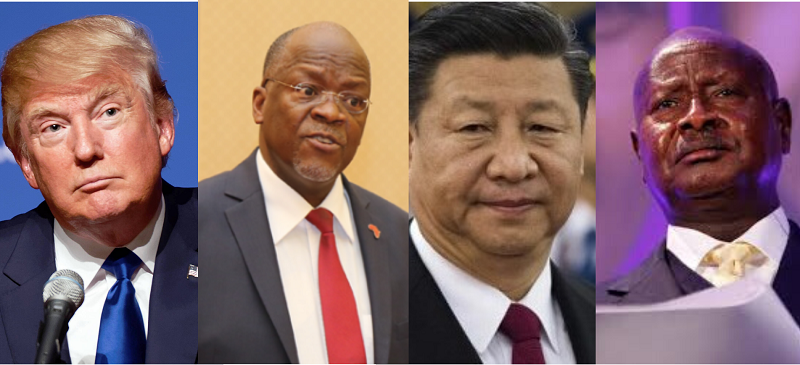"England's women’s football – a bright future"
January 15 Women’s football in England has a tumultuous history, writes Jake Elson, 20, a Commonwealth Correspondent from Bunbury in Australia, but is now gaining the respect of fans and officials.
Women’s football in England has a tumultuous history, writes Jake Elson, 20, a Commonwealth Correspondent from Bunbury in Australia, but is now gaining the respect of fans and officials.
Several months ago, 55,000 supporters watched England lose 3-0 to Germany at Wembley. Generally, this is the usual story. However, this game was significant. It was the England Women’s first home International at Wembley. Given the tumultuous history of Women’s Football in Britain, it’s a sign of how far things have come.
For many years, women had to fight for the right to play football. Until the 1960’s, British society was based on rigid gender roles, stemming from an erroneous belief that men were superior to women. Indeed, the very origin of women’s football in Britain is tied to the women’s suffrage and emancipation movement, with several pioneers of the women’s game highly active in that movement.
They were up against it from the start. After a riot ensued between 5,000 spectators during the first women’s game in Edinburgh, the Scottish FA banned women’s football. Although many Scottish women simply crossed the border, the game still struggled until the First World War.
The declaration of hostilities in 1914 led to a massive shortage in the workforce. Almost overnight, entire factory rosters enlisted in the Army. Despite social attitudes towards women being at their most oppressive, many businessmen had to temporarily put aside their prejudice to aid the war effort and reduce the sudden working population deficit. However, recreational activities were stringently reduced, and organised sports leagues were suspended. By the time a small factory team from Preston emerged, there was a giant hunger for football.
That hunger was filled in the form of the Dick, Kerr ladies team. Originally formed as a result of a men’s v women’s scratch match (which the women’s side won), the team became the number one team in the entire British Isles. Although unfortunately forgotten, the players were stars, with one of these players, Joan Whalley, being compared favourably to later greats Stanley Matthews and Tom Finney – no mean feat! The golden era continued after the war, most notably a game at Goodison Park against St Helens Ladies (a match they won 4-0), which attracted 53,000 spectators, with a recorded 14,000 locked out! With a record of having won 703 out of 752 played it isn’t hard to see why they can be viewed – as the Guardian’s Will Buckley put it – as British football’s answer to the Harlem Globetrotters.
The suffragette movement was at its zenith. Women had earned the right to sit in Parliament and vote (although complete voting equality would not come until 1928). The result of women working in the factories had led to a softening of attitudes. However, the Football Association was completely indifferent to these changes. Although they claimed that there were serious misgivings regarding the safety of women playing the game, these were mere feeble attempts to divert attention from the real issue – despite social changes, the very thought of women playing football was offensive to manliness. As such, on December 5, 1921, the FA banned organised women’s football from all FA grounds. The ban would not be rescinded until 1971.
Women’s football in England is still in the shadow of the glory days of the wartime years. However, recent performances give the game hope. England Ladies made the 2009 UEFA women’s cup final, but lost to the Germans 6-2. Domestic club and recent vanguard of women’s football in England, Arsenal Ladies FC, has won the UEFA Women’s Champions league. The domestic league has seen a massive professionalisation with the introduction of the Women’s Super League- a competition that has seen many big-name men’s clubs begin to assist their female counterparts.
However, there is still a long way to go. Whereas male superstars such as Wayne Rooney and Frank Lampard earn in the multi-million range per year, many women plying their trade only earn a miniscule fraction of that. The men’s game dominates the back pages, prime-time television slots and advertising, whilst the women’s game is still neglected. Yet the future seems bright for women’s football. Whereas 90 years ago the FA wanted nothing to do with it, now they are heavily involved, organising and administering a growing sport. Indeed, with films such as ‘Bend it like Beckham’ capturing the imagination of young women, the profile of the game is growing.
The struggle for equality in sport continues, however the current signs of progress show that the equality enjoyed in pro-tennis tournaments is a possibility in the future. And as the England women’s team continue to improve and win the respect of their male counterparts, let’s hope so.
photo credit: borkur.net via photopin cc
…………………………………………………………………………………………………………………
About me:
I am a history buff, but also am into soccer. I referee soccer, and would like to go FIFA one day. I’m currently studying politics and international relations at Edith Cowan University. My aim is to become a police officer in Western Australia, and I would like to be Prime Minister one day.
I am a Conservative and a Monarchist, and believe in the role of the Commonwealth as a tool for good.
…………………………………………………………………………………………………………………
Opinions expressed in this article are those of the author and do not necessarily represent the views of the Commonwealth Youth Programme. Articles are published in a spirit of dialogue, respect and understanding. If you disagree, why not submit a response?
To learn more about becoming a Commonwealth Correspondent please visit: http://www.yourcommonwealth.org/submit-articles/commonwealthcorrespondents/
…………………………………………………………………………………………………………………




